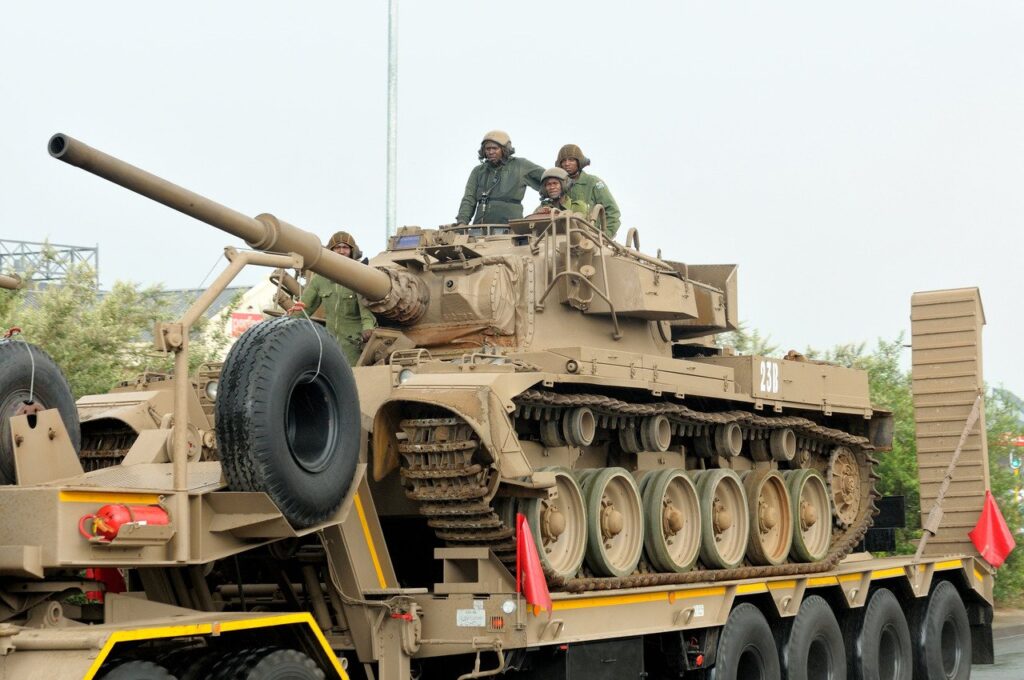
Death From Above: How China Is Reinventing the Anti-Tank Missile
Here’s What We Need to Remember: The Javelin’s on-the-move targeting ability is also of great relevance as it seems to rival, if not outmatch the Chinese claim that its new vehicle-mounted weapon can attack while off-road. The Javelin can dismount and operate as a shoulder-fired weapon used by small groups of soldiers on the move or also mount and fire from tactical vehicles as well, such as those that go off road.
New Chinese-built, vehicle-mounted anti-tank missiles are being engineered to attack U.S. tanks “from above,” meaning at higher altitudes that cause more destruction with a top-down attack.
The Chinese People’s Liberation Army is now deploying this new kind of weapon reported to be more powerful and more mobile than existing weapons for mounted off-road attack missions against armored vehicles.
Quoting an unnamed “military expert,” the Chinese government-backed Global Times newspaper says the top-down attack is in part intended to exploit the top of a tank where soldiers might be exposed. The new missile can be mounted on China’s Mengshi series off-road assault vehicle or infantry fighting vehicles. The concept of a higher-altitude top-down attack is interesting in that it could be of particular relevance in the mountainous plateau regions of Western China and places where air support is not available.
“China operates a wide selection of anti-tank missiles, including portable ones and those launched by attack helicopters, drones, armored vehicles and assault vehicles, military observers said, noting that the new missile could be mass produced and be widely used by the PLA in the near future,” the Global Times writes.
There are not a lot of details available regarding the weapon available in the report, however its existence brings some interesting parallels to mind, such as the U.S. Army’s TOW missile, Javelin anti-tank weapon or even ground-launched Hellfire missile. But there are several key respects in which the Chinese weapon may not parallel a number of more recent U.S. anti-tank weapons innovations.
The Army’s ongoing upgrades to the Javelin anti-tank missile offer an interesting point of reference, as a new Raytheon-built Lightweight Command Launch Unit for the weapon actually doubles the attack range from 2.5km to 4.5km. The more recent innovations, slated to enter production in 2022, also incorporate improved sensor fidelity and a “fast lock” for improving attacks on the move. Army officials told The National Interest last year that the service is also engineering a new warhead for the Javelin as well.
The Javelin’s on-the-move targeting ability is also of great relevance as it seems to rival, if not outmatch the Chinese claim that its new vehicle-mounted weapon can attack while off-road. The Javelin can dismount and operate as a shoulder-fired weapon used by small groups of soldiers on the move or also mount and fire from tactical vehicles as well, such as those that go off road. The concept of a top-down attack certainly makes sense as something of tactical relevance, but apart from being deployable on mobile, off-road vehicles, there is nothing mentioned about what might better enable that kind of attack? Any weapon, if fired from an advantaged point at higher altitudes, should it be able to go off road, can exploit a tactical advantage and strike from the top down.
Kris Osborn is the defense editor for the National Interest. Osborn previously served at the Pentagon as a Highly Qualified Expert with the Office of the Assistant Secretary of the Army—Acquisition, Logistics & Technology. Osborn has also worked as an anchor and on-air military specialist at national TV networks. He has appeared as a guest military expert on Fox News, MSNBC, The Military Channel, and The History Channel. He also has a Master’s Degree in Comparative Literature from Columbia University. This article first appeared earlier this year.
Image: Flickr.


